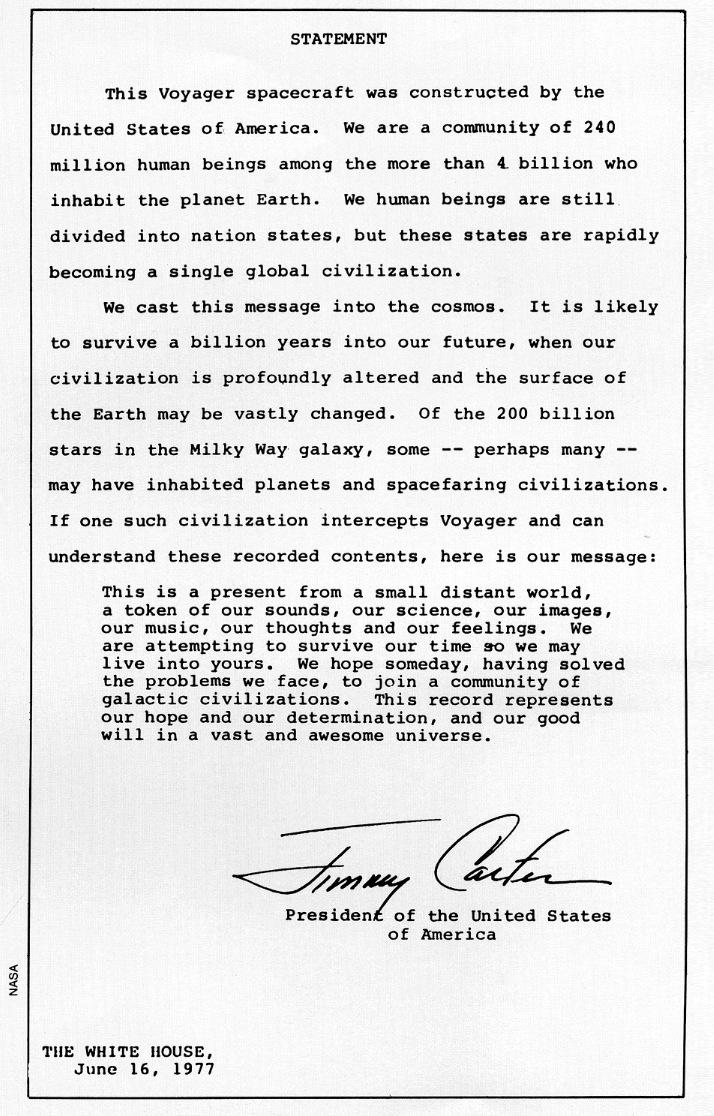The Vault is Slate’s history blog. Like us on Facebook, follow us on Twitter @slatevault, and find us on Tumblr. Find out more about what this space is all about here.
On a cold evening in 1969, a peanut farmer was standing outside a Georgia restaurant when he noticed a mysterious pulsating light in the western sky. “It was the darndest thing I’ve ever seen,” he recalled seven years later, during his successful presidential campaign. “One thing’s for sure, I’ll never make fun of people who say they’ve seen unidentified objects in the sky. If I become President, I’ll make every piece of information this country has about UFO sightings available to the public.” Indeed, Carter filed his own report of the incident with the International UFO Bureau in Oklahoma City (read it here).
Even though Carter later came to believe that what he called “space people” hadn’t paid Earth a visit, there’s still a possibility that his words might visit them. In the summer of 1977, he penned a three-paragraph letter to accompany the Voyager spacecraft. Today, that letter is travelling beyond our Solar System at speeds of eleven miles a second. It is the first letter in history to reach extrasolar space.
Carter was not the only human to send a message on Voyager—the “Golden Record” stowed onboard contained greetings in languages ranging from Sumerian to Welsh, as well as short speeches from UN delegates interwoven with whale sounds. (“My dear friends in outer space,” one delegate intones over a collage of cetacean murmurs, “as you probably know, my country is situated on the west coast of the continent of Africa, a land mass more or less in the shape of a question mark.”)
Yet Carter’s letter was the longest message sent by any earthling, and the one that most fully evoked the utopian mission of Voyager. “We are a community of 240 million human beings among the more than 4 billion who inhabit the planet Earth,” he wrote. “We hope someday, having solved the problems we face, to join a community of galactic civilizations.” As I wrote recently on the new history website The Appendix, Carter was quite possibly inspired to this flight of fancy by the theatrical release of Star Wars three weeks earlier. But perhaps he was simply waxing idealistic, touched by the thought of writing the first interstellar letter in human history.
To read more histories of people and artifacts who go off the map, check out the newest issue of The Appendix.

NASA.